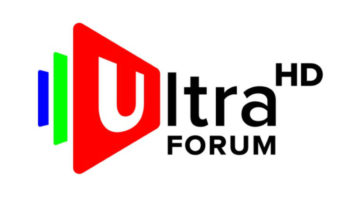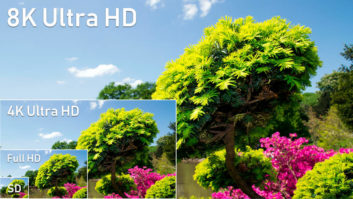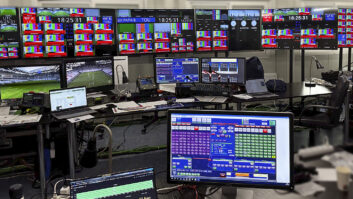The first-ever demonstration of Ultra HD satellite broadcasting took place in Tokyo last week and several companies have been keen to highlight their role in the demonstration, including Ateme whose Kyrion MPEG-4 encoders featured prominently. This demonstration relied on 16 synchronised Ateme Kyrion units to encode the Ultra HD video into an MPEG-4 AVC (H.264) bitstream, allowing the broadcast to operate over a standard satellite uplink, writes Andy Stout.
This demonstrates the H.264 compression capabilities of Ultra HD streams — a critical issue given that Ultra HD broadcasting consumes a tremendous amount of bandwidth. Specifically, 18 minutes of uncompressed Ultra HD footage consumes 3.5TB of data and one minute of uncompressed footage consumes 194GB. The use of Ateme’s MPEG-4 AVC compression technology dramatically reduces satellite bandwidth requirements while maintaining the best possible video quality.
Ateme’s encoding technology was previously selected for use in the first public Ultra HD non-broadcast demonstration in May 2007 by NHK. Ateme is cooperating closely with NHK Labs in the design and development of this next-generation standard.
Ultra-HD provides16x greater resolution than the current generation HDTV standard, which is a single frame 1080p broadcasting rate of 7680 x 4320. NHK’s Ultra HD includes a much wider viewing angle than current HDTV, which is further enhanced by its 22.2 speaker 3D audio component (as compared to today’s 5.1 surround sound).
The prototype super-fast Ultra HD cameras can capture data at a rate of 4000 lines per frame and Ultra HD screens present images so vivid and real that scan lines are virtually unnoticeable, even with close viewing of the picture. Ultra HD has been proposed to SMPTE as a next-generation worldwide broadcast standard.
NHK, which first began research into HD in 1964, has now started public testing of Ultra HD standard equipment and broadcasts. 2009 will mark the introduction of the full specification for Ultra HD and NHK estimates that Ultra HD-compatible TVs will be ready to receive broadcast to households within 10-15 years.
“Ateme is extremely proud to be taking this next important step with NHK as part of our long-term partnership, by providing the world’s best MPEG-4 AVC encoders to them for this historic trial,” said Benoit Fouchard, vice president of sales, broadcast and broadband for Ateme. “Through the use of our Kyrion platform, NHK has demonstrated the successful transmission of 16 synchronised streams with full interoperability among all equipment in the chain, including the Fujitsu IP9500 H.264 decoders. NHK has taken a worldwide leadership role in developing this next-generation of HD, and we are very honoured they have selected us to be their H.264 technology partner.”





